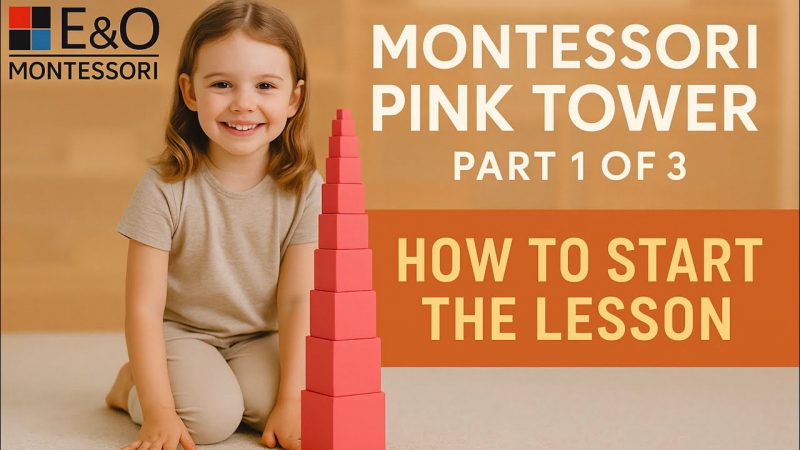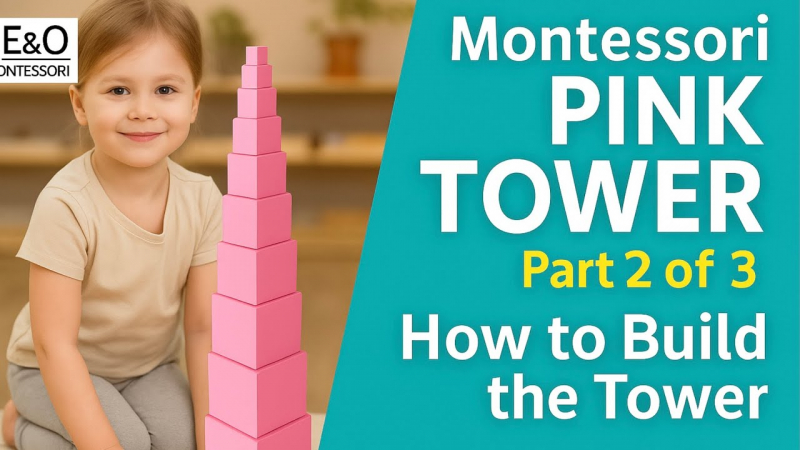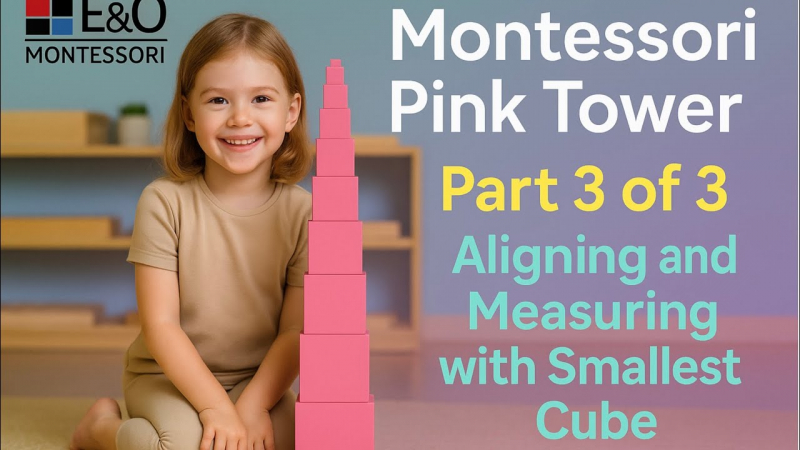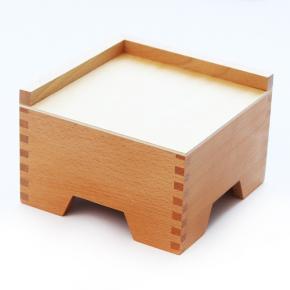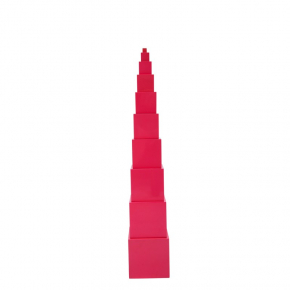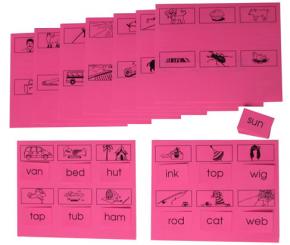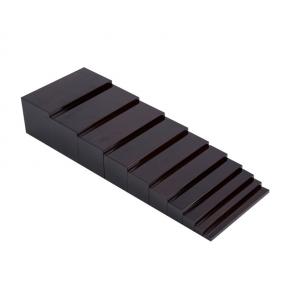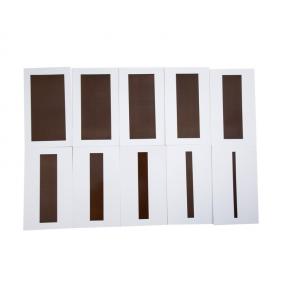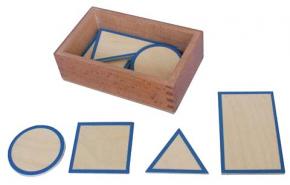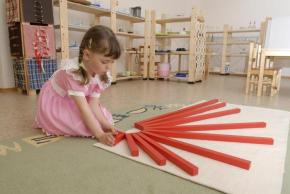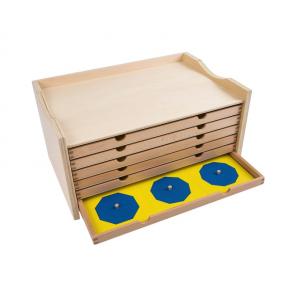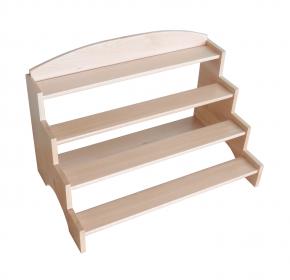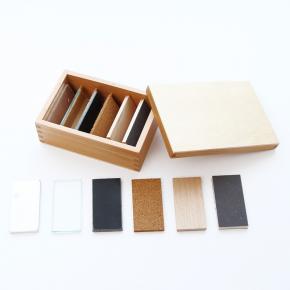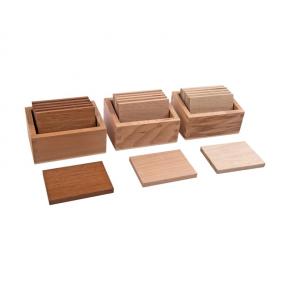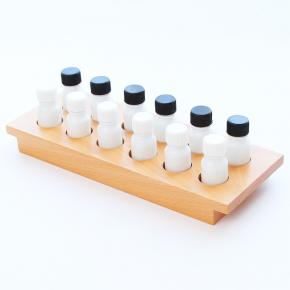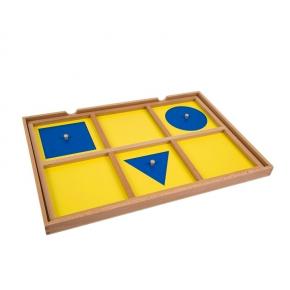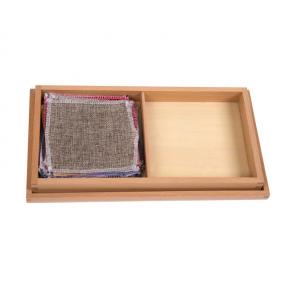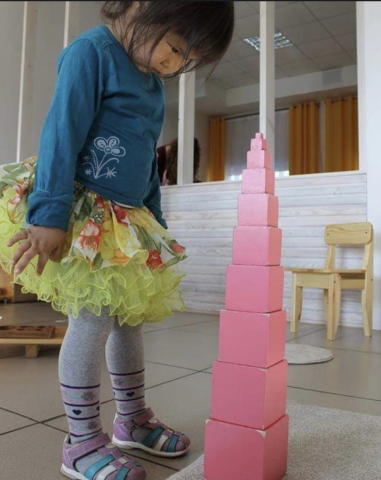
Why the Montessori Pink Tower Still Matters Today
The Montessori Pink Tower is more than just a set of ten pink wooden cubes — it’s one of the most iconic sensorial materials in Montessori education. Despite being introduced over a century ago by Dr. Maria Montessori, the Pink Tower remains deeply relevant in today’s classrooms and homes.
🌸 Why Is the Tower Pink?
Dr. Maria Montessori didn’t choose pink randomly. Through careful observation of children, she noticed that they were naturally drawn to soft, warm, and pleasant colors — particularly shades of light pink. When she experimented by presenting identical materials in different colors, children consistently preferred the pink version.
Montessori believed that educational materials should call to the child. The color needed to be gentle, non-distracting, and aesthetically appealing, while still clearly isolating a single concept — in this case, size.
🌟 What Is the Pink Tower?
The Pink Tower consists of ten wooden cubes, increasing in size from 1 cm³ to 10 cm³, all painted the same shade of pink. It is designed to help children refine their visual discrimination, concentration, and coordination through tactile, hands-on exploration.
Children are invited to build the tower from largest to smallest, developing both muscle memory and problem-solving skills. It’s not just a stacking toy — it’s a foundational experience in math, logic, and spatial awareness.
📏 A Sensorial Experience with Deep Mathematical Meaning
In the advanced presentation, the smallest cube (1x1x1 cm) becomes a unit of measurement. The child uses it to align and measure each cube’s:
- Height
- Width
- Depth
This isn’t just about checking alignment — it’s a hands-on, multisensory exploration of volume and scale. Through movement and repetition, the child builds an intuitive understanding of geometry.
🧠 Indirect Preparation for Mathematics
By using the 1 cm³ cube as a measuring tool, the child:
- Discovers that each cube increases by exactly 1 cm in all three dimensions
- Experiences volume growth in three dimensions
- Develops a concrete understanding of measurement and proportion
- Learns about non-standard units before formal math instruction
This indirect preparation lays the groundwork for:
- Early understanding of cubic numbers (e.g., 2³ = 8, 3³ = 27)
- Foundations of the decimal system (10 cubes from 1 to 10 cm)
- Concepts in geometry, alignment, and scaling
- Future work with multiplication, powers of numbers, and place value
This bridges the gap between physical manipulation and abstract mathematical thinking — a hallmark of Montessori education.
Why the Pink Tower Must Be Made of High-Quality Solid Wood: The Role of Weight in Montessori Sensorial Learning
If the cubes are made from lightweight or hollow materials — such as plastic or low-quality composite wood — the child loses the opportunity to feel the difference in mass. While the cubes may vary in size visually, they feel nearly identical, making the experience flat and less meaningful. In contrast, when the Pink Tower is made from high-quality, solid wood like beech or maple, each cube becomes progressively heavier. This physical weight adds a crucial tactile dimension to the activity, deepening the child’s engagement and supporting the development of muscle memory, coordination, and concentration. If you come across a very inexpensive Pink Tower, it's often a sign that it has been made from low-quality, lightweight wood or synthetic materials. These versions may look similar but lack the essential sensorial qualities that make the material effective in a Montessori environment.
🎥 Watch the Montessori Pink Tower in Action!
We’ve created a detailed three-part video series to demonstrate how to introduce and use the Pink Tower at home or in the classroom:
📘 1. Montessori Pink Tower Part 1 of 3 – Introduction & First Lesson Demonstration
Learn how to start the first presentation of the Pink Tower — from inviting the child, to carrying the cubes and giving a clear, structured lesson.
👉 Watch on YouTube
🧱 2. Montessori Pink Tower Part 2 of 3 – How to Build and Stack the Cubes Properly
In this video, we show how to stack the ten pink cubes from largest to smallest, introducing concepts of size, order, and balance.
👉 Watch the demonstration on YouTube
📏 3. Montessori Pink Tower Part 3 of 3 – Aligning and Measuring for Visual Precision
Discover how to align the cubes using the smallest cube to check for accuracy. This step encourages precision, observation, and self-correction.
👉 Watch the advanced presentation on YouTube
Want to see more? Visit our YouTube Channel @montessori1907 to explore dozens of Montessori materials in action.
💡 Why It Still Matters Today
In a world of screens and fast-moving toys, the Pink Tower stands out as a tool that invites deep concentration, quiet problem-solving, and self-directed learning. It cultivates something rare: the child’s inner discipline, attention to detail, and love for discovery.
🛒 Want to Try the Pink Tower at Home or in Your School?
Explore our high-quality Montessori Pink Tower here. Handcrafted with precision and painted with non-toxic pink paint, it’s perfect for ages 3+.
🧠 Further Reading
“Children who engage in sensorimotor learning show greater long-term retention and understanding of abstract concepts.”
— Journal of Educational Neuroscience, 2023
#MontessoriPinkTower #SensorialLearning #MontessoriAtHome #EarlyChildhoodEducation #HandsOnLearning #MontessoriMaterials

